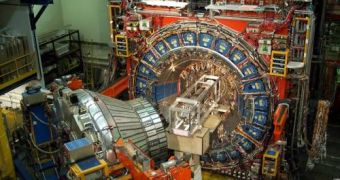Quantum physicists think they know the answer. Probabilistic calculations reveal than the data provided by previous experiments has been miscalculated and that the Higgs boson has in fact been discovered. Weird! The Higgs boson is the only particle predicted by the Standard Model that hasn't been discovered yet. It is thought to be responsible for giving other elementary particles mass, and might explain why the photon has no mass while the other bosons, the W and Z particles, are absolutely massive.
The Standard Model describes the elementary particles as invisible point-like bits of energy that have no mass. On the other hand, common sense tells a different story, we all know that at least some particles must have masses, otherwise the universe would probably be a very different place. This practice is mostly applied as mathematical models of interactions between elementary particles carrying mass simply make no sense.
It is predicted that, similarly to electric and magnetic fields, the nature of space-time must also allow the existence of a Higgs field consisting of elementary particles named Higgs bosons. The Higgs field would interact with elementary particles, dragging them on in order to give them mass. The W and Z bosons, for example, carry the weak nuclear interactions between other particles but they weigh as much as 100 times more than a single proton.
Finding the Higgs boson would basically complete the Standard Model and could facilitate the discovery of a series of other elementary particles. The supersymmetry attributes to each particles in the Standard Model a massive companion called sparticle, but no sparticles have been discovered so far. Proving the existence of sparticles and discovering the Higgs boson would basically mean that there could exist up to five different Higgs boson particles.
Physicists from the Fermi National Accelerator Laboratory using the Tevatron collider or its much more powerful Large Hadron Collider could solve part of the problems observed with the Standard Model. On the other hand, some physicists argue that, during a series of previous experiments, the Higgs boson was overlooked. Chien-Peng Yuan from the Michigan State University states that the Large Electron-Positron experiment ran by CERN during the period of time between 1989 to 2000, has implied the simplest supersymmetry theory, thus they have been trying to find the Higgs boson that has the lowest mass and is responsible for the mass of the W and Z boson.
If this is indeed correct, then the particle approximated by physicists to have a mass of about 121 times that of the proton would in fact have only 65 times the mass of the proton, meaning that the particle detectors had no chance to find it!
This mostly happened because the CERN experiments looking for the Higgs boson would have actually looked for a collision that could have determine the Z boson to decay and emit a Higgs boson in the process, but theory predicts that the particular lightest Higgs boson would present very weak interactions with the Z boson.
Fermilab physicist Marcela Carena argues the Yuan's presumptions are only partially correct, and in fact they weren't looking to find the lightest of the Higgs bosons knowing it has small interactions with the Z and W bosons, but even if they would have, then it would still be heavy enough to be detected by the LEP particle detectors.

 14 DAY TRIAL //
14 DAY TRIAL //